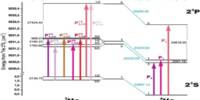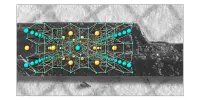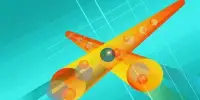Photonic sensing technologies based on spectroscopic, fiber optics, and LIDAR approaches are increasingly being used in the energy sector for a wide range of measurement and monitoring applications in the wind, oil and gas, and geothermal industries, to name a few. Photonic sensors contribute significantly to a sustainable, green future by assisting in the more efficient control of processes and the reduction of polluting emissions in a wide range of applications in energy exploration, generation, distribution, and conservation.
A group of physicists has developed a method for mass-manufacturable photonic sensors to operate at the quantum limit. This breakthrough opens the door to practical applications such as greenhouse gas monitoring and cancer detection.
Sensors are a constant in our daily lives. Sensors, though often unseen, provide critical information for modern healthcare, security, and environmental monitoring. Modern automobiles alone contain over 100 sensors, and this number is expected to grow.
We are really excited by the opportunities this result enables: we now know how to use mass manufacturable processes to engineer chip scale photonic sensors that operate at the quantum limit.
Associate Professor Jonathan Matthews
Quantum sensing is poised to transform today’s sensors, significantly improving their performance. More precise, faster, and reliable measurements of physical quantities have the potential to transform every field of science and technology, including our everyday lives.
However, the majority of quantum sensing schemes rely on special entangled or squeezed states of light or matter that are difficult to generate and detect. This is a significant barrier to harnessing the full power of quantum-limited sensors and deploying them in real-world scenarios.
A group of physicists from the Universities of Bristol, Bath, and Warwick demonstrated in a paper that it is possible to perform high precision measurements of important physical properties without the use of sophisticated quantum states of light and detection schemes.

The key to this breakthrough is the use of ring resonators — tiny racetrack structures that guide light in a loop and maximize its interaction with the sample under study. Importantly, ring resonators can be mass manufactured using the same processes as the chips in our computers and smartphones.
Alex Belsley, Quantum Engineering Technology Labs (QET Labs) PhD student and lead author of the work, said: “We are one step closer to all integrated photonic sensors operating at the limits of detection imposed by quantum mechanics.”
Using this technology to detect changes in absorption or refractive index can be used to identify and characterize a wide range of materials and biochemical samples, with applications ranging from greenhouse gas monitoring to cancer detection.
Photonic sensing technology is increasingly being used in early-detection and early-warning systems for biological hazards, structural flaws, and security threats due to its many superior qualities. Photonic Sensing is the first book to provide a comprehensive overview of this exciting and rapidly evolving field, with a focus on the development of cutting-edge applications in a wide range of safety and security areas, from biodetection to biometrics.
Photonic Sensors focuses on experimental contributions related to novel photonic principles, structures, or materials. Papers describing research using a combination of experimental and analytical/numerical approaches are also encouraged. Photonic Sensors publishes letters and review articles in addition to regular research articles. Letters allow for the rapid dissemination of research results that are of current interest to the photonic sensor community.
“We are really excited by the opportunities this result enables: we now know how to use mass manufacturable processes to engineer chip scale photonic sensors that operate at the quantum limit,” said Associate Professor Jonathan Matthews, co-Director of QET Labs and co-author of the work.
















